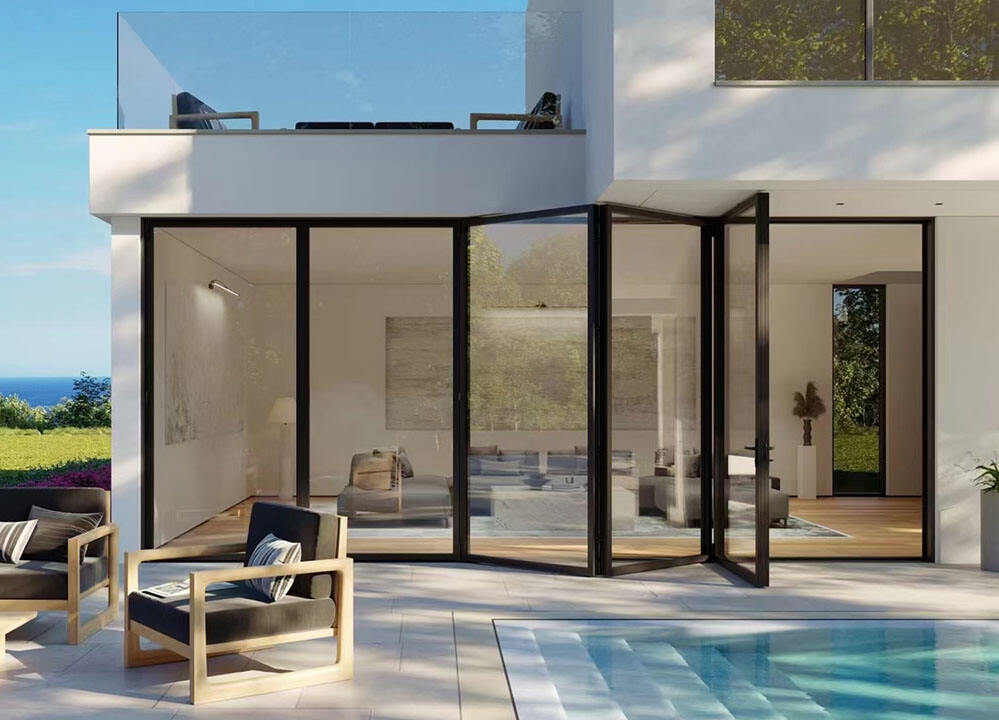Common Ways To Open Hanging Windows
Awning windows are windows that open along the horizontal axis, according to the different positions of the hinges and pivots. Awning windows can be divided into three opening forms: top-hung windows, bottom-hung windows, and center-hung windows.
Top-hung window
Hinges are installed on the upper side of the sash to open to the outdoor direction, and this type of window is generally better at preventing rain.
External casement top-hung windows are also a kind of hung windows, and belong to the casement window series just like other hung windows.
An exterior casement window is a combination of an exterior casement window and an exterior casement window that opens left or right. Although the external casement window is derived from the external casement window and other window types, it is an independent window type like the external casement window, not a subordinate relationship.
Common skylights also generally use top-hung.
 |
 |
Advantages of top-hung windows
Good ventilation
Upper-hung windows can also prevent gusts of wind from blowing directly on the human body, with a certain degree of wind resistance.
Good safety performance.
As the upper window is closed, it is fixed by its hardware, it is not easy to open from the outside, anti-theft ability is very good, the use of upper window can reduce the head.
Easy to clean and sanitary.
Strong practicality.
Does not take up space, even if you forget to close the window, it is difficult for rainwater to enter the room when it rains.
Good sealing performance.
When the top-hung window is closed, it can be fixed by the door and window fittings, and its own structural characteristics make its sealing performance better.
Center-hung window
 |
 |
The so-called center-hung window is a window consisting of a window frame and a window sash fixed with glass stranded, characterized by: the window sash is stranded in the middle of the window frame by the center-hung device, and the floating center stile is divided into two parts, the upper part of which is fixed to the window frame, and the lower part of which is fixed to the window sash.
Advantages of center-hung windows.
Good ventilation performance.
Center-hung windows have the largest opening area, which is conducive to the indoor air circulation of the house and strong circulation.
Strong practicality.
It avoids occupying indoor space when the inner casement window is opened, and can avoid conflict with indoor items against the window.
Good sealing and heat preservation performance.
By sealing and locking around the window sash with multiple locking points, it ensures the sealing effect and heat preservation of the windows and doors, which can make the sealing of the windows greatly enhanced.
low-hanging window
 |
 |
Hinges (hinges) are installed on the lower side of the window, the upper window opens to the outside, the lower window opens to the inside, this way of opening is also known as inverted. At present, the family use more for the internal opening inverted, this type of window not only can be hung, but also to realize the internal casement.
Advantages of lower-hung windows.
- When the window is inverted, it does not occupy indoor space, the curtains can be opened and closed freely, and the hanger will not conflict with the window;
- When inverted, the window can only be opened to inverted mode when the window is closed indoors, and the angle of opening is small, so you can switch to inverted mode even when you go out, and you don't have to worry about strangers entering your home while keeping the indoor air fresh;
- In winter, when you use the inverted mode to ventilate the room, the wind enters the room from the two sides and the top, and does not blow directly onto your body, making you feel more comfortable;
- Opening the window for ventilation on rainy days can also effectively prevent rainwater from entering the house;
- Inward opening of window sash can be convenient for homeowners to clean the glass outside the room.
 EN
EN
 AR
AR
 CS
CS
 DA
DA
 NL
NL
 FI
FI
 FR
FR
 DE
DE
 EL
EL
 HI
HI
 IT
IT
 JA
JA
 KO
KO
 PL
PL
 PT
PT
 RU
RU
 ES
ES
 SV
SV
 IW
IW
 ID
ID
 LV
LV
 LT
LT
 SR
SR
 SK
SK
 SL
SL
 UK
UK
 VI
VI
 ET
ET
 HU
HU
 MT
MT
 TH
TH
 TR
TR
 FA
FA
 MS
MS
 GA
GA
 HY
HY
 UR
UR
 BN
BN
 GU
GU
 TA
TA














